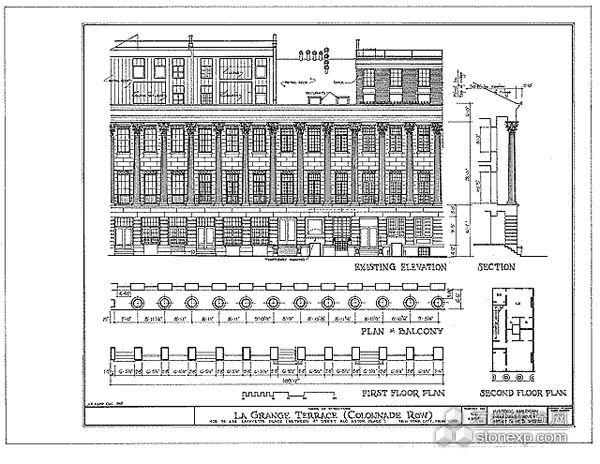|
Father Benet Caffrey, the archivist for St. Mary’s, puzzled over the marbles for years. It seemed safe to associate them with Mr. Kountze. It was known that he had collected sculpture — about 20 years ago the school sold two of Mr. Kountze’s Berninis to the Metropolitan Museum of Art. And Mr. Kountze had definitely incorporated some salvaged architectural artifacts into the garden colonnade at the rear of his house. But no one was quite sure where the ruins were from.

“One guess was that they were an ancient temple in Sicily,” Father Benet said. Then again, hearsay had it that the marble had some association with Wanamaker.

Last month the developer Jeffrey Zak, the parent of two Delbarton graduates, wrote me that the mystery of the Lost City had been solved.
The break in the case was the school’s sale of the wooded land where the fragments lay.
The Lost City was moved from its semisecret resting place to a faculty parking lot.
In a chance encounter with a garden designer, Marta McDowell of Chatham, N.J., Father Benet mentioned his continuing quest. Within a day or two, he recalls, she had typed into Google the search string “wanamaker Corinthian demolition,” raising a March 2008 article in Period Homes magazine by the classical architect Thomas Gordon Smith on the surviving houses of Colonnade Row — with images that match exactly the pieces of Delbarton’s Lost City. Bingo.
As it happens Mr. Smith, a professor of architecture at the University of Notre Dame, has for years been studying Colonnade Row, making measured drawings of the surviving houses and interiors. He used them as an inspiration in designing the 2007 Classical Galleries in the American Wing of the Metropolitan Museum of Art.
When he learned of the Delbarton trove, he was in Morristown in a week, like an Egyptologist who has found out that there is another chamber in King Tut’s Tomb.
Against the asphalt of the parking lot, the Lost City marbles lack the mysterious, pungent majesty they had in the woods, but they are still a startling sight: more than a dozen complete columns and scores of other pieces. There is enough marble to reconstruct one or more whole facades. Many pieces are still moss-encrusted. A few are nearly pristine, others severely deteriorated.
Father Benet is reticent about the school’s plans for the marble, but notes that “the headmaster says he would like his parking lot back.” One idea that has been floated is to use some of the elements to extend the Kountze garden. But they are definitely going somewhere soon.
As it happens, Mr. Smith says that in the 1960s curators at the Metropolitan Museum talked of buying the surviving facades of Colonnade Row for what became the garden court of the American Wing, but the museum ultimately re-used the 1822 Greek revival facade of the old Assay Office on Wall Street.
Is the Met now interested in the other half of Colonnade Row?
Approached on the subject, Morrison Heckscher, the Lawrence A. Fleischman chairman of the American Wing, said the museum was working on a purchase, but for just a few of the elements.
|





